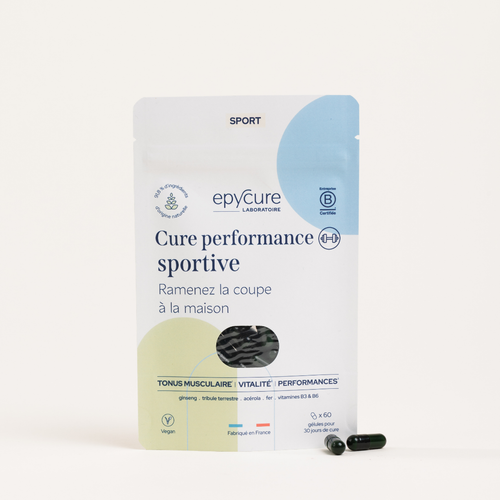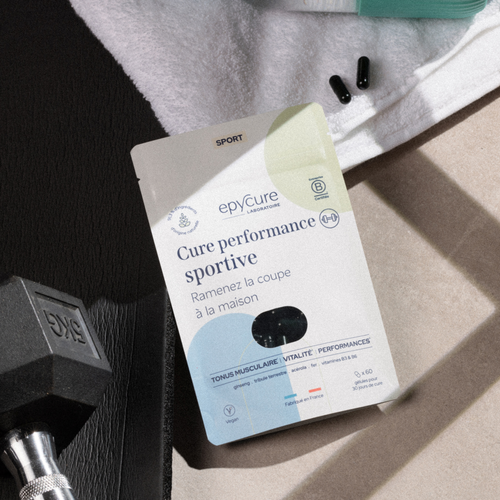Can't bend down the day after your workout? Indeed after exercise, it is not always comfort, if you have pain and feelings of stiffness in the muscles it is because you have aches.
But what are aches?
It is necessary to differentiate between aches and pains linked to sports and those linked to illnesses such as the flu. Here we will talk about aches and pains linked to too intense sporting activity.
This feeling of pain generally appears between 24 hours to 48 hours after exercise. It is due to the fact that the muscle has produced lactic acid and its micro-tears generate an inflammatory reaction in the body to repair them (between 12 and 48 hours, or even 72 hours after exercise). Aches appear after more intense effort than usual. This can be an intense effort over time such as aches following a hike of more than several hours or running. Aches can be linked to the intensity of exercises that lasted a few minutes, for example aches linked to weight training or a series of abs.
Fortunately, certain habits to adopt before and after sport can accelerate relaxation and muscle recovery and thus reduce the painful period.
Warm up to prevent soreness
Before starting a sporting activity, it is important to warm up, that is to say, to increase the intensity of the exercises little by little and thus to accustom your muscles to the efforts required of the body. It is also important to stretch and hydrate well after sporting activity.
Massage yourself with heating oils
A massage just after sport, and ideally with a heating oil, helps reduce the intensity and duration of aches. In fact, by massaging your muscles you reactivate blood circulation within them and thus help to relax the muscle.
Take a cool bath just after exercise
The ideal after sport is to swim in the sea, if you are not lucky enough to live near the ocean taking a cool bath works just as well. The cold has a very positive effect in preventing the appearance of aches, which is why high-level athletes use cryotherapy in order to reduce the pain felt following training during the 4 days following training. effort.
Take a painkiller
If you have followed all of the advice given above but you are still suffering from excessive pain, you can take an analgesic, anti-inflammatory, this will have a direct effect but will be more intended to hide the pain rather than repair your pain. muscle.
Homeopathy
If you are a fan of natural solutions to mask pain you can use arnica montana, which can be consumed as a cream or directly in capsule form. As a grandmother's recipe to effectively combat aches and pains, there is the possibility of using St. John's wort leaves in cream or poultice. Other grandmother's tips such as using blackcurrant leaves in herbal tea exist.
Rest
To combat aches and pains, it is necessary to rest your muscles after an intensive sports session. However, the ideal is not to lie down on a sofa but to make gentle efforts such as cycling or walking in order to recover as quickly as possible.
See a doctor
If your aches last more than 3-4 days it is necessary to consult a doctor, in fact if the aches tend to remain for a long time after a sporting activity this may be due to a pathology such as myopathy, a disease affecting the muscles.
The role of diet in reducing muscle aches
Oily fish and spices against inflammation
Oily fish, sources of omega 3, are ideal for fighting inflammation produced by micro-tears. To assimilate them well, we prefer them steamed or in foil (mackerel, sardines, etc.) or in carpaccio (salmon). We also think of spices: turmeric, chili pepper and ginger. A winning trio of powerful anti-inflammatories. Add a little to all your dishes and drinks during meals following exercise. Ginger must be fresh, for example mixed in a drink, in strips in a fruit salad, heated in small pieces in a chicken dish with vegetables, or even infused in herbal tea.
Water and green vegetables against acidity
We start by drinking water rich in bicarbonates, which buffer lactic acid, muscle waste that “burns” in the hour following exercise, and therefore responsible for the discomfort just after sport. A large drink immediately after training is immediately good. And we adopt green vegetables, which contain quantities of minerals (potassium, magnesium, calcium) which reduce acidity, inevitable after muscular effort. Cabbages (broccoli, kale, etc.) are particularly interesting. Before or after exercise, put them on the menu: kale salad with nuts, steamed broccoli, cauliflower tabbouleh.
Antioxidants against pain
Theine accelerates the drainage of muscle waste including lactic acid. The abundant presence of Epigallocatechin gallate (EGCG), a super-antioxidant and anti-inflammatory catechin in green tea makes it an ideal drink, to be enjoyed hot or cold, unsweetened. Be careful if you have a sensitive stomach, as theine can trigger heartburn or diarrhea. So do not exceed 4 cups per day. In the kitchen, use the “olive oil” reflex, drizzle on raw vegetables, cooked vegetables, rice, etc. The right dose: three to four tablespoons per day.
And finally, don't ignore warm-ups and stretching: warming up well will lubricate the joints and stretching well will guarantee proper recovery, with more relaxed muscles. In both cases, the risk of injury will be reduced!



